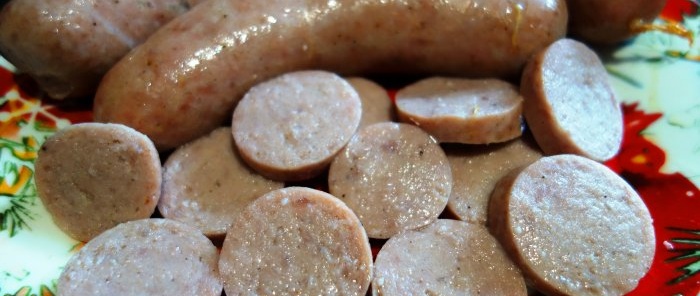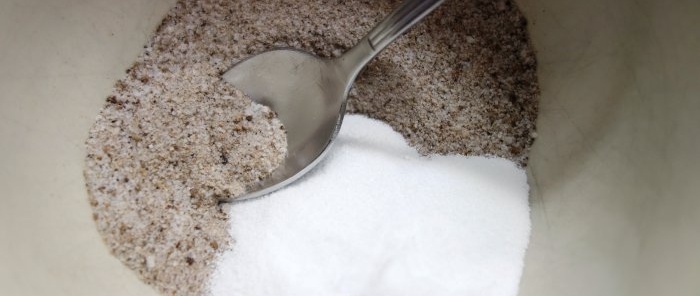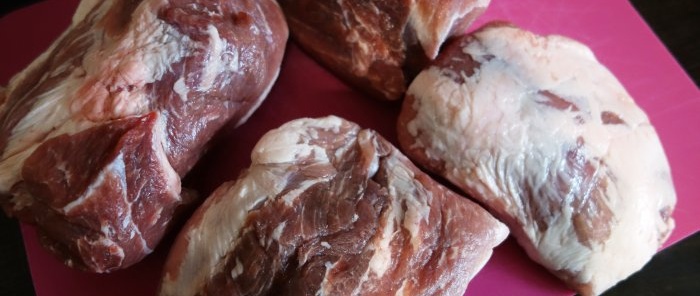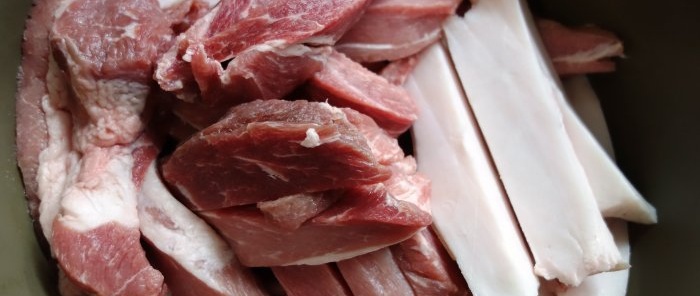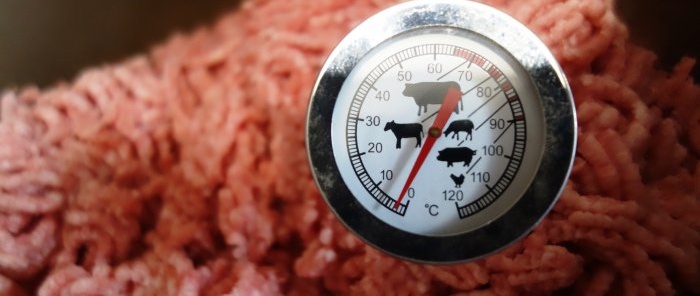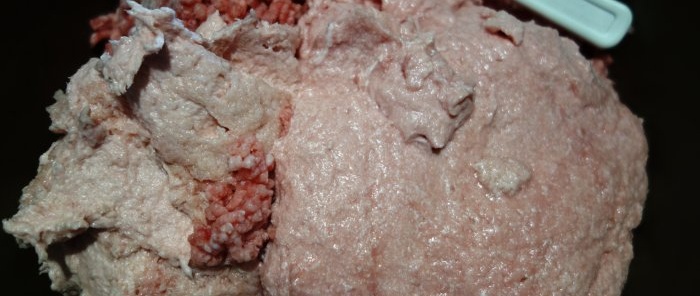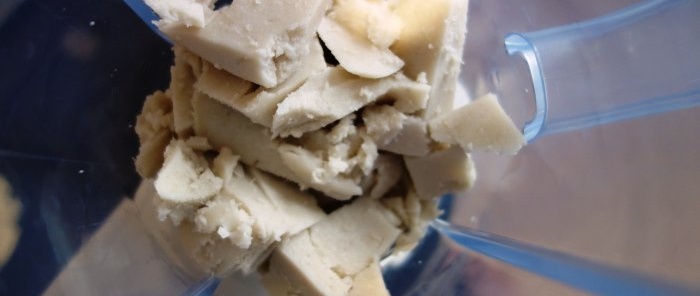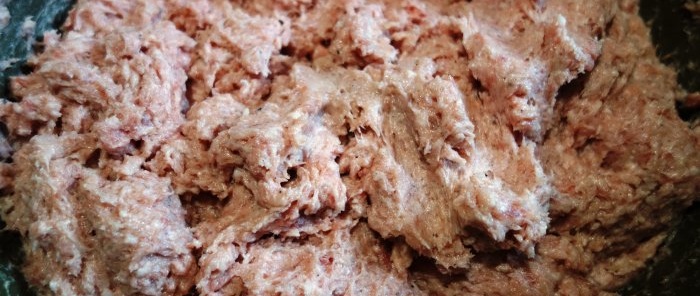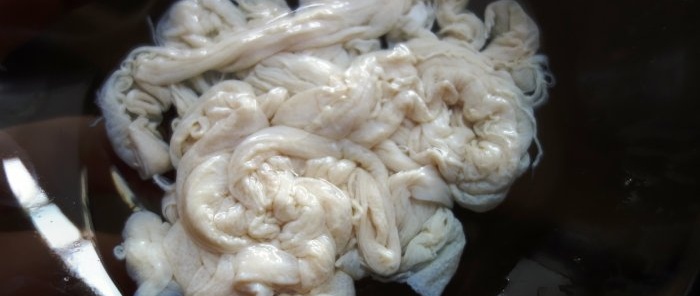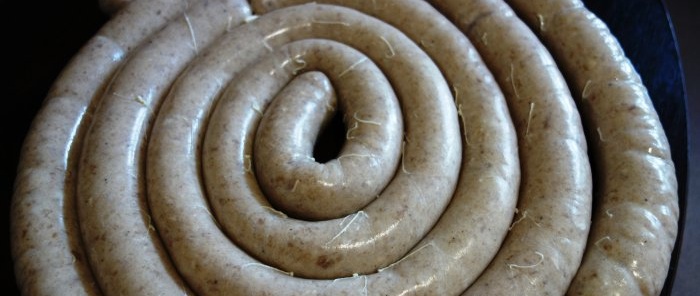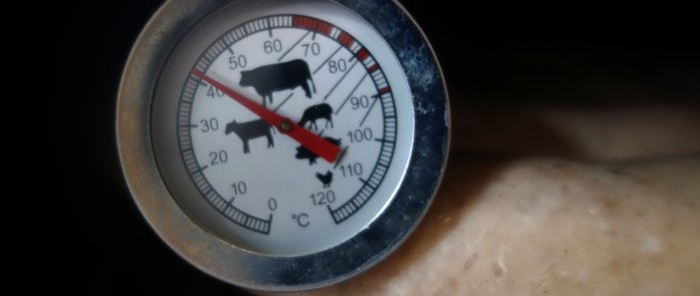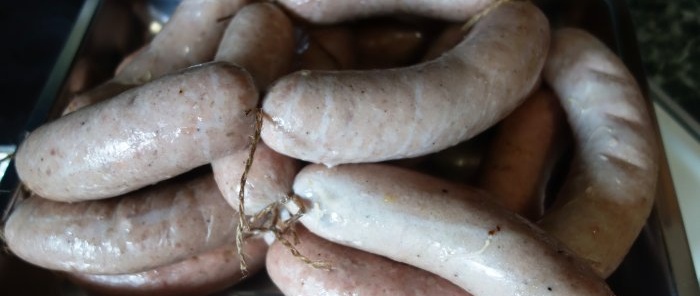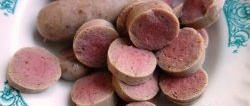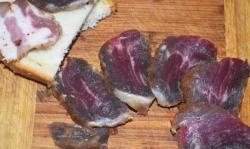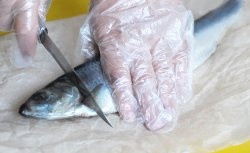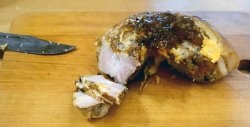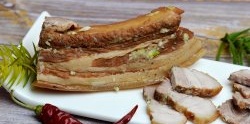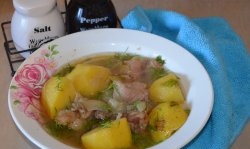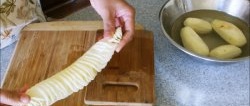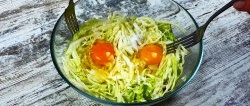Making real pork sausages at home
Making sausages at home, difficult or not? What is a sausage? It is essentially specially prepared minced meat, placed in a casing and cooked according to a recipe. There is nothing complicated, the main thing is to know some tricks and recipes.
All ingredients are calculated based on the weight of raw meat (meat and lard). For convenience, exactly one kilogram is taken.
The first and most important rule. At any time during meat processing, the raw material must not be heated above 12 degrees Celsius. This is critically important, I’ll tell you why below. There are several tricks to prevent this from happening. We work with frozen raw materials. Place the metal parts of the meat grinder in the freezer in advance. During breaks, we put the raw materials in a bag and in the freezer. We also freeze water or milk in advance. Don't forget to use a food probe thermometer.
We grind the raw materials twice through a meat grinder with the smallest mesh.
Add all the ingredients, including salt, spices and liquid.
Additionally, grind with a blender or food processor (if desired).
Mix very thoroughly. Here's another trick. You need to mix for a long time and efficiently, with your hands for about ten minutes. Five minutes will do in the food processor. When the minced meat (emulsion) is intensively mixed, something happens there at the cellular level of proteins, the cells are destroyed and exactly the same consistency is obtained.
Next, fill the entire emulsion into the pre-prepared shell. It is necessary to achieve the correct density of sausages. You can twist the “sausage”, thereby forming sausages, or you can tie it with a rope.
Next cooking process. Cooking can be done both in the oven and in water. But in any case, water (air) should not be allowed to heat above 80 degrees Celsius. It is necessary to cook until the center of the sausage reaches approximately 71-72 degrees Celsius. Here again you will need a thermometer.
Then quick cooling, for example in ice water and freezing if desired.
That's all.
Nitrite salt and we'll all die. Yes, it's poison. But it is required to give sausages and sausages a pleasant pink color. Nitrite also prevents the development of botulism bacteria, and this is no joke. Nitrite has been used since Soviet times, since the forties. Even earlier, saltpeter was used. In such concentrations it is completely harmless. Chinese white cabbage from the store contains hundreds of times more of it.
Phosphate or citrate. This ingredient increases the pH of raw meat. Fresh meat has a “normal” acidity level. After the slaughter of an animal, the acidity level drops sharply, which is not what we need.With sour (conditionally) meat, it is easy to catch a defect - swelling, more on this below. With the help of phosphates or citrates, we can say we get fresh meat from far from fresh meat.
Schwartenblock. This is an additional ingredient, a semi-finished product. It is obtained from pork skins. Just a source of protein - collagen. Necessary for the required consistency.
Defects in home sausage production. If you follow all the rules when making sausages, then the risk of getting defective at the end tends to zero.
The most popular defect is edema. This is when a dry cutlet remains inside the sausage, floating in the broth.
Follow the recipe, all the subtleties and tricks. Only then can you get a wonderful, very tasty product!
Ingredients:
- lean pork meat 800 grams,
- lard 200 grams.
- Table salt 10 grams,
- nitrite salt 10 grams.
- Ground pepper 6 grams.
- Water or milk 250 milliliters.
- Shell.
- Schwartenblock (optional).
- Phosphates (citrates) optional.
All ingredients are calculated based on the weight of raw meat (meat and lard). For convenience, exactly one kilogram is taken.
The first and most important rule. At any time during meat processing, the raw material must not be heated above 12 degrees Celsius. This is critically important, I’ll tell you why below. There are several tricks to prevent this from happening. We work with frozen raw materials. Place the metal parts of the meat grinder in the freezer in advance. During breaks, we put the raw materials in a bag and in the freezer. We also freeze water or milk in advance. Don't forget to use a food probe thermometer.
Cooking steps
We grind the raw materials twice through a meat grinder with the smallest mesh.
Add all the ingredients, including salt, spices and liquid.
Additionally, grind with a blender or food processor (if desired).
Mix very thoroughly. Here's another trick. You need to mix for a long time and efficiently, with your hands for about ten minutes. Five minutes will do in the food processor. When the minced meat (emulsion) is intensively mixed, something happens there at the cellular level of proteins, the cells are destroyed and exactly the same consistency is obtained.
Next, fill the entire emulsion into the pre-prepared shell. It is necessary to achieve the correct density of sausages. You can twist the “sausage”, thereby forming sausages, or you can tie it with a rope.
Next cooking process. Cooking can be done both in the oven and in water. But in any case, water (air) should not be allowed to heat above 80 degrees Celsius. It is necessary to cook until the center of the sausage reaches approximately 71-72 degrees Celsius. Here again you will need a thermometer.
Then quick cooling, for example in ice water and freezing if desired.
That's all.
Some of the most popular questions and myths
Nitrite salt and we'll all die. Yes, it's poison. But it is required to give sausages and sausages a pleasant pink color. Nitrite also prevents the development of botulism bacteria, and this is no joke. Nitrite has been used since Soviet times, since the forties. Even earlier, saltpeter was used. In such concentrations it is completely harmless. Chinese white cabbage from the store contains hundreds of times more of it.
Phosphate or citrate. This ingredient increases the pH of raw meat. Fresh meat has a “normal” acidity level. After the slaughter of an animal, the acidity level drops sharply, which is not what we need.With sour (conditionally) meat, it is easy to catch a defect - swelling, more on this below. With the help of phosphates or citrates, we can say we get fresh meat from far from fresh meat.
Schwartenblock. This is an additional ingredient, a semi-finished product. It is obtained from pork skins. Just a source of protein - collagen. Necessary for the required consistency.
Defects in home sausage production. If you follow all the rules when making sausages, then the risk of getting defective at the end tends to zero.
- Do not raise the temperature above 12 degrees Celsius when processing meat.
- Insure yourself with phosphates or citrates.
- Mix the minced meat very thoroughly.
- Stuff the sausages (loaves) tightly.
- Cook at a temperature not exceeding 80 degrees Celsius.
The most popular defect is edema. This is when a dry cutlet remains inside the sausage, floating in the broth.
Follow the recipe, all the subtleties and tricks. Only then can you get a wonderful, very tasty product!
Similar master classes
Particularly interesting
Comments (3)

